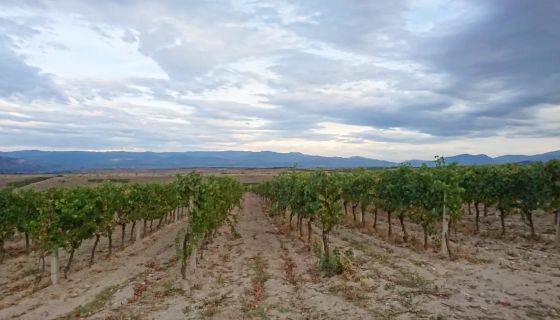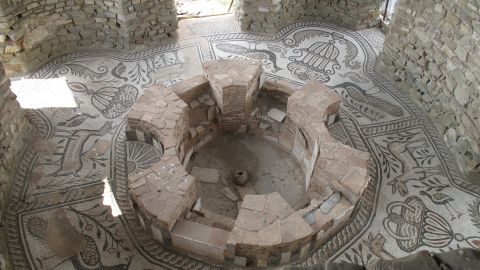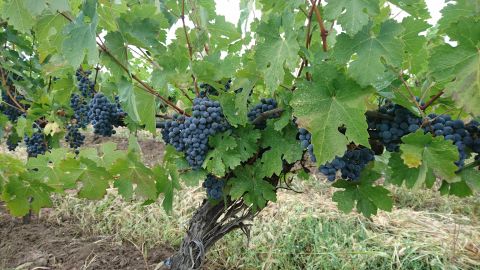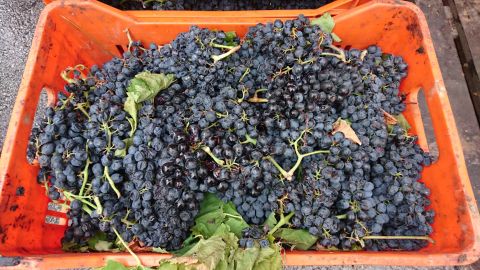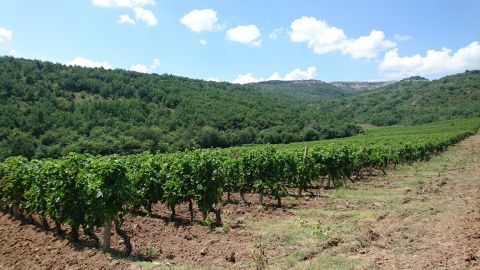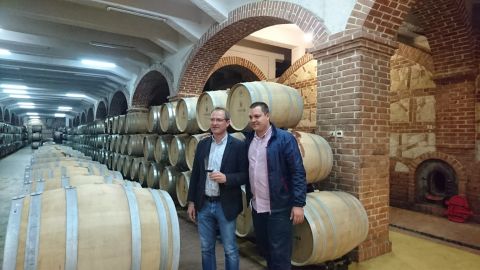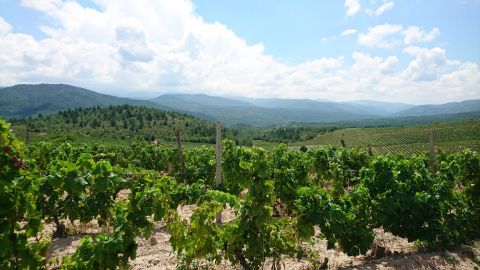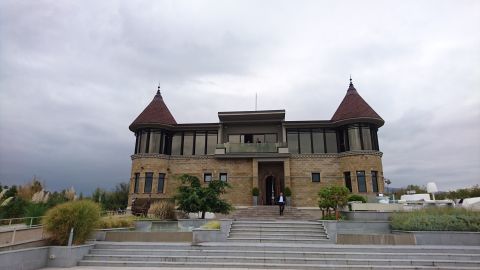The Macedonians have a saying that if you want to get to know a country well, sit at its table and drink its wine. That’s a great way to explore this rather unknown country – and here you can be sure it will always be a generously loaded table. Of all the countries in former Yugoslavia, the Republic of North Macedonia (its official name since 2019) is by far the most reliant on wine. Vineyards make up 10% of its agricultural land and grapes are its second most important crop (after tobacco); 28,000 of the country’s 30,000 ha (74,000 acres) of grapevines are wine grapes.
And now is a great time to explore. As in the rest of the Western Balkans (see this World Atlas of Wine map), North Macedonia’s wine industry is busy reinventing itself, in this case moving away from its heavy reliance on cheap bulk exports, a hangover from the Yugoslav era, to higher-quality bottled wines, which are increasingly focused on local grapes and terroir.
A brief history
Over the centuries, North Macedonia has been shaped by many cultures, including Roman, Byzantine, Slavic and Turkish. At one time, the kingdom of Macedonia was the most powerful state in the world under Philip of Macedon (reign 359–336 BCE) and his son Alexander the Great, until his early death in 323 BCE. The stories say that both rewarded their soldiers with wine from this region to celebrate victories and to commiserate after rare defeats. The land that constituted that ancient kingdom is now shared with Bulgaria and Greece, but North Macedonia sees itself as the spiritual descendant of this historic empire.
Wine in North Macedonia is even older, with archaeological evidence going back to the cult of Dionysus in 13th century BCE. Wine was important in ancient Roman times, when this land was famous for its rich, powerful wines – vines are depicted in the fabulous mosaics at the Stobi archaeological site.
This continued through the arrival of Christianity and the Byzantine era. The Ottomans ruled for five centuries, suppressing wine, but then a revival of organised winemaking began with the first Tikveš winery in the town of the same name in 1885. After World War II, Macedonia joined the Kingdom of Serbs, Croats and Slovenes and then became part of Yugoslavia. Its latest era began in 1991 when it declared independence from Yugoslavia and it’s now a candidate country for joining the EU.
A little geography
North Macedonia is the hottest and driest part of the Balkans – a landlocked country at the crossroads of Mediterranean climate and continental influences. It claims 270 sunny days a year (though I caught a few rare days of rain on my recent trip) and the temperature can climb over 40 °C (104 °F) in summer. It’s also dramatic and mountainous, with towering peaks framing the landscape in every direction. These mountains are an important feature, creating breezes that take the edge off summer heat and moderating winter chill. Rainfall is typically 400–600 mm (16–24 in) in wine regions (although up to 1,700 mm/67 in in the mountains), making irrigation usually essential, but also ensuring that agrochemical treatments are few, and there are now several organic projects. This is a country where tortoises and lizards roam the vines, and butterflies flutter above them.
There’s a welcome movement towards sustainability in the wine industry, led by Tikveš Winery, which recently joined International Wineries for Climate Action and is about to become the first ESG-certified producer in the region. At the same time, many private growers minimise their spraying for economic reasons, too, treating only the vines they can afford to based on the price they will get for their grapes (which may be as low as €0.15–€0.20 per kg depending on variety).
The grape story
The story of North Macedonia is intertwined with the country’s most important grape variety, Vranec (spelled Vranac or Vranç in the other Western Balkan countries). It covers 10,800 ha (26,687 acres) and makes North Macedonia the biggest grower of this grape in the world.
The name Vranec means black stallion, which suits its powerful, inky dark, sometimes muscular wines. It’s recently been discovered to be the offspring of Kratošija (aka Primitivo) and Duljenga and is believed to originate in Montenegro (where it’s also by far the most important grape, present in an estimated 97% of vineyards). It needs a warm, dry climate and well-drained soils to do well as it’s not very cold tolerant (it freezes at -12 °C/10 °F) and is prone to grey rot. When Vranec arrived in North Macedonia in the early 1950s, growers took to it with enthusiasm as it suits growing conditions here and can produce very generous yields (35–40 tonnes/ha) – especially valuable at a time when large crops were rewarded. However, producers are increasingly finding that with yields of around 6–8 tonnes, the right sites and careful handling, high quality is very possible.
The wines are typically deep in colour (the variety has more anthocyanins than Cabernet Sauvignon) and alcohol tends to be on the high side (14–16%) but crucially it also retains good levels of acidity (6–8 g/l) even at high ripeness levels. In flavour, Vranec is typically juicy with fruit notes of black or red cherry, bilberry and blackberry, and sometimes floral notes of violet, adding hints of spice, dark chocolate and leather as it matures – think Saperavi-meets-Shiraz. It allows winemakers lots of choice – they can pick early and vinify in steel to show its fresher, juicy face, or to pick later and age in oak (most often French oak with some US and Hungarian in use; unfortunately, local oak is very sappy and often not well seasoned or coopered). There are even versions made from super-concentrated, raisined grapes – almost Amarone-like with a local twist. Vranec can also bring a sense of North Macedonian identity to bordeaux blends, where it can fill out the palate of Cabernet Sauvignon and freshen the body of Merlot. To add to its credibility, Vranec can show a sense of place, with variations between cooler and warmer zones, and has definite ageability – Chateau Kamnik’s 2013 Vranec Terroir Selection was still vibrant and youthful when I tasted it in late 2023. Since 2018, Vranec has had its own day of celebration in October, along with other countries that grow it – supported by Wines of Macedonia, who promote Macedonian wines worldwide.
Perhaps ironically, however, for a country that suits red wines, local drinkers prefer whites, especially Temjanika. This name refers to both an aromatic Muscat-like cultivar that may originate in Romania or the Balkans as well as Muscat Blanc à Petits Grains; either way, it is usually vinified dry to semi-dry. Other Balkan grapes grown in the country include the only genuinely indigenous grape in commercial production, the light red Stanušina (290 ha/717 acres planted). This pale-skinned and light-bodied grape is most often made into delicate rosé, but can also make white wines and light, fruity reds.
Smederevka (aka Bulgaria’s Dimyat) is the most-planted white – usually made into basic wine or distilled for rakia (the local name for brandy and grape distillates), and there are also plantings of Herzegovina’s Žilavka and Serbia’s Župljanka on the white side. The other important local red is Kratošija, known from the Balkans for centuries (for instance mentioned in the medieval Budva statute) and now usually found in field blends. And of course, there are the usual international suspects.
Stand-out wineries
North Macedonia has 16 wine districts divided among three main regions: Pelagonia-Polog/Western Wine Region, with 1,817 ha/4,490 acres; Pchinja-Osogovo/Eastern Wine Region, with 1,733 ha/4,282 acres; and Vardar River Valley/Central Wine Region, by far the largest at 24,664 ha (60,946 acres) and most important. It’s mostly an industry of big wineries, some the inheritors of the state kombinats, some greenfield investments from the late 1990s onwards (the first private winery of this new era was Bovin, founded by the Bogevski family in 1998).
The largest, and most dominant in the market, is Tikveš Winery (confusingly, Tikveš is the name of both the wine district and its leading winery). It was the first post-Ottoman winery back in 1885, and became a state plant in Yugoslav times, when growers used to be rewarded for growing huge crops – famously the 1984 harvest was so big it had to be stored in the Kavardarci town swimming pool. In 2003, Tikveš Winery came under the ownership of the M6 group headed by Svetozar Janevski, who has made several bold decisions to bring the winery into the modern era, including stopping all bulk shipments. The current head winemaker, Marko Stojaković, is a Serbian-born, French-raised protégé of the late Philippe Cambie, who had been consulting here.
The winery works closely with viticultural and winemaking academics including Professor Klemen Lisjak (Agricultural Institute, Slovenia) and Professor Alain Deloire (Montpellier SupAgro, France), and has recently engaged agronomist Giovanni Bigot (from the University of Udine) to focus on terroir and sustainability. It sells over 15 million bottles of wine annually, making it one of the largest producers in Europe and a significant market player with labels like Alexandria and the 55-year-old brand T’ga za Jug. It is also building a portfolio of microwineries and single-vineyard expressions from sites such as Bela Voda, which overlooks Veles Lake, and Barovo, a stunning, isolated parcel of old vines at 600–700 m (1,969–2,297 ft) in elevation on volcanic soil.
Barovo red is regularly one of my favourite wines from the country, while the new Bela Voda Žilavka is fine, mineral and elegant. Other recommended wines from Tikveš include Temjanika Special Selection, Vranec Luda Mara, Babuna Albariño and the organically farmed Domaine Lepovo Chardonnay.
Imako, near Stip, is another large winery that started as a greenfield investment in 2002. It now has a capacity of 12 million litres and ranks of massive stainless-steel tanks. The winemaker clearly knows his main job of delivering huge quantities of consistent mass-market wines, with around a third sold in bulk. However, as the winery owns or controls 650 ha (1,606 acres), on hills at 400–600 m, it’s been able to develop more premium wines based on interesting plots of vineyards. The top label is Constellation, from a vineyard of older vines at nearly 500 m (1,640 ft) in elevation, impressing with its vibrant, fruit-focused style, while the Majestic label offers fresh, fruity, good-value wines.
Venec has also made a good impression recently. It was founded in 1954 but completely modernised in 2016 and owns 420 ha (1,038 acres) of vineyards. Winemaker Kire Ristov vinifies only 10–15% of the grapes the winery grows, typically from its best sites in the highly regarded micro-zone called Disan in the Tikveš district, selling the rest to other wineries or in bulk. His classic-label Vranec is a great example of the grape in a young, fresh style, while Koria, a single-vineyard selection of Temjanika, and Orle, a single-vineyard Vranec, are benchmark examples of the varieties. There’s also an excellent juicy, spicy Kratošija 2020 from 39-year-old vines.
It’s not just about big wineries though. Chateau Kamnik is the most notable of the country’s smaller wineries and may have been the first actual wine estate, with 17 ha (42 acres) of vineyards surrounding the winery on a hilltop in the outskirts of Skopje, plus it recently purchased 20 ha of dry-farmed old vines at Veles. Long-standing winemaker Sandra Krstevska crafts rich, bold wines, often with powerful alcohol and generous oak, that show their quality with patience (Vranec Terroir Grand Reserva easily ages for a decade and more – though I hate the heavy glass bottles). Other recommended wines include the Cuvée Prestige red blend, Viognier, and the Ten Barrels and Winemaker’s Selection ranges.
Popov is another smaller wine estate with vines next to the winery in Smolnik and in two other locations, making 65 ha (161 acres) in total. Their wines have sometimes been inconsistent, but there’s a new winemaker as of a few months ago and a move away from Macedonian oak (often leaky and under-seasoned), so reliability should improve. For now, Popov, Reserve Kratošija 2021 is one of the best in the country, and one of the very few pure examples of this ancient Balkan grape, the result of a decade-long project to select bud material. Other wines worth tasting are Reserve Carmenère 2018, Cabernet Franc 2015 and a pleasant Pinot Gris 2021.
With over 20,000 grape growers registered, it’s perhaps unsurprising to discover that North Macedonia has a strong grey market of home-made wine and grape distillates like rakia. To bring this under control, the government introduced a programme just three years ago to encourage small wineries to register so they can sell wine legally. The Macedonian Family Wineries Association, limited to wineries that bottle wine and produce no more than 30,000 litres, now has around 40 members all over the country. A recent tasting of their wines in Kavardarci revealed a buzzing scene of innovation, and the best wines were impressively good quality. Notably, it’s the small wineries that are working hardest with Stanušina – usually as delicate rosé. Some of the small wineries that impressed included Wine Cellar Popovi, Sarika (among the country’s highest vines, planted at 730 m/2,395 ft elevation near Prilep – incidentally Europe’s only known source of natural rubies), Peshkov, Podrum Paradzik, Damjanov, Eros and Maksimilijan, while on a previous visit Brzanov, Lazar, Kukutanov, Ad Astrum, Popova Kula and Kerem have shown promise.
Visiting North Macedonia
This is a warm-hearted and welcoming country with tasty food and lots of history to see as well as a fascinating wine scene. For now, only Wizzair flies direct from London to Skopje, but there are connecting flights via Germany and Austria, too. It’s well worth a wander around the buzzing narrow alleyways of the Old Bazaar and along the Vardar River to the 15th-century stone bridge and up to the fortress (mind the crows that nest here – they will attack unwary wanderers), and there are statues and monuments at every turn.
For the best selection of boutique North Macedonian wines, stop in at Wine Berry wine bar and shop in Skopje. If you have more time, take the 3-hour trip to one of Europe’s oldest lakes, Lake Ohrid, with its peaceful waters, numerous churches and unique wildlife, and book a winery trip with one of the many local tour operators.
Finding North Macedonian wine abroad
Macedonian wine is exported to more than 30 countries, though sadly there are relatively few exports to the UK or US but here are a few sources for recommended wines.
UK
Novel Wines – Imako, Vino Constellation Red Cuvée 2021
Humble Grape – Lazar Kratošija 2017
Tikveš London – Tikveš, Special Selection Vranec 2017
Hallgarten & Novum Wines import a range of Tikveš wines and Tikveš, Barovo 2019 is quite widely available (merchants also include GrapeSmith, Great Wines Direct, Hay Wines, Hic!, Highbury Vintners, Lekker Wines, Loki Wines, Noble Green, Strictly Wine and Wine Poole)
US
European Cellars – Tikveš
AG Mac – Bovin and Chateau Kamnik
Ocean South – Popova Kula
Tikveš, Barovo 2019 is available in California and Florida according to Wine-Searcher, and Cincinnati wine shop Fine Wine O'Clock stocks wines from Bovin and Chateau Kamnik.
Members can also access our tastings note database for reviews of North Macedonian wines.

